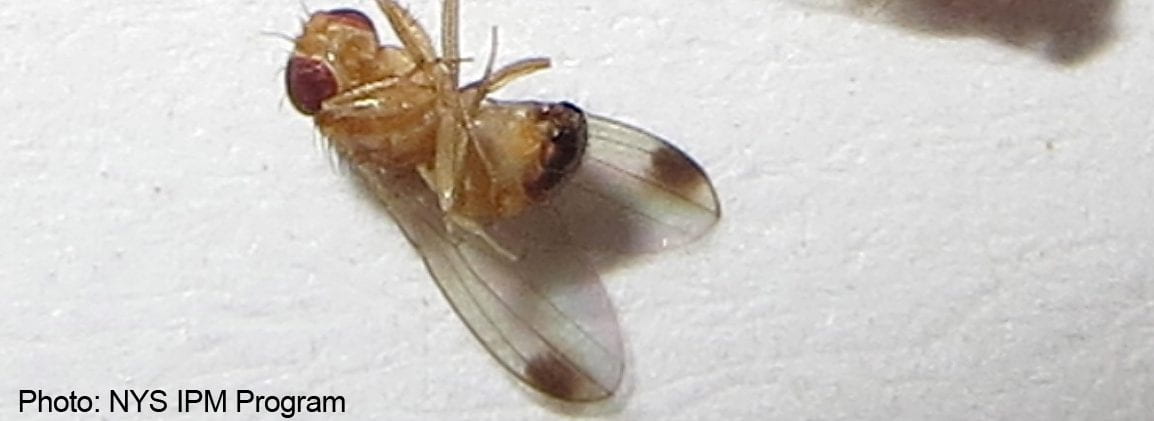
Effective use of salt flotation will help you determine if your fruit are infested with SWD and if your spray program is working. It also will give you a perspective on what your customers may find when they take the fruit home to eat fresh or to make pies, jellies, jams and preserves.
I learned that variations on the salt flotation method helped a couple NY blueberry growers decide when to close this season. After a bad 2017 SWD season, when many NY blueberry growers suffered significant crop loss and shut down early, it was time to take action to monitor their fruit. Here are their methods.
Grower 1.
We analyze a batch of berries picked off bushes and a batch gathered that have fallen to the ground. Blueberries are collected randomly across our 5-acre patch. We test batches of 20-30 berries from these two sources separately and then compare.
Mix a solution of one gallon of water to one cup of salt. Place collected blueberries in two separate, labeled bags. Slightly squeeze the berries to help release larvae. Some say to give it about an hour, but in most cases, if larvae are present, they will show up in the solution as early as 15 minutes. Of course, you will want to use a magnifying device such as a jewelers loop or magnifying glass. You will see small white larvae if infestation is present.
Their results this year:
- Aug 08: negative, both from bushes and on the ground.
- Aug 10: negative, both from bushes and on the ground.
- Aug 11: positive, both from bushes and ground, but more pronounced with the latter.
In 2017, at least once, fruit tested positive for berries that were on the ground, but negative when picked from the bush.
Grower 2.
The salt flotation method we use is basically the same as the method demonstrated at the SWD workshops in 2014-2015. But instead of pouring the salt solution into a low tray and visualizing larvae over a black paper with a hand lens, we pour the solution through a very fine stainless steel mesh permanent coffee filter and check for larvae under a dissecting microscope. It's faster overall, and much easier to find the hard-to-see 1st instar larvae (probably to my detriment, since in the past I could ignore what I couldn't see).
We collect 100 berries randomly from throughout the planting. These are covered with salt solution (1 cup salt in 1 gal water) in a plastic bag. I don't bother pressing on the berries to crack the skins as they suggest, but gave them plenty of time to exit on their own (at least an hour, usually 2 or more).
Results this year, percent fruit with larvae, in our unsprayed blueberry planting:
- Jul 26: 1.5%
- Aug 3: 4%
- Aug 9: 16.5%
- Aug 11: 30%
- Aug 13: 78% - in two days, the SWD numbers rose dramatically!

In all cases, collect what appears to be sound, perfect fruit to test for SWD infestation using salt flotation. SWD entrance and exit holes in fruit are less than half a mm in diameter and practically invisible.
I hope these two growers’ experiences using salt flotation will motivate you to monitor your fruit in this way to check for SWD infestation.
There are still a lot of delicious berries out there; lets check them and protect them from this nasty insect!

